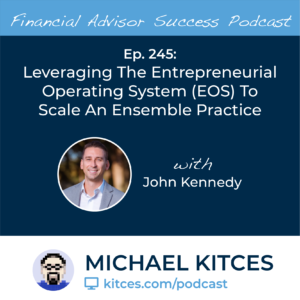Enjoy the current installment of "Weekend Reading For Financial Planners" – this week's edition kicks off with a look at the latest SEC initiative on the 'gamification' of investing (e.g., Robinhood) to the use of behavioral nudges (e.g., certain robo-advisors), with a new warning that it will be delving deeper into the "digital engagement practices" of broker-dealers and investment advisers that use technology to entice investors to roll over assets and/or trade on their digital platforms... with a particular eye on when a technology-driven investment 'nudge' may turn into investment advice (with the higher fiduciary duty that would attach to such advice).
Also in the industry news this week are a number of other interesting industry headlines:
- A recent survey shows that more than 9-in-10 CFP certificants are strongly satisfied with their choice of career, and that the majority of advisors have seen more prospects and had more communication with existing clients since the pandemic
- FINRA's new Rule 4111 is taking effect, which will make it more onerous for broker-dealers to take on brokers with multiple dings on their on their regulatory record (in the hopes of curtailing the number of brokers that get re-hired after engaging in 'problematic' behavior)
From there, we have several articles on spending and saving, including:
- How to think about the allocation of financial duties within couples (and ways for couples to structure their spending accounts for marital harmony)
- Challenges in home affordability are being driven in part by the reduction in builders constructing "starter" homes, as the number of new homes costing <$200,000 has dropped from 60% in 2002 to <2% today
- Tips on simple "money-saving" phone calls (from cable providers to property tax assessors), and potential services that can make those calls for you
We've also included a number of marketing-related articles:
- The desire of advisory firm marketers to begin using testimonials is creating friction with compliance departments that are still figuring out how exactly to implement the new rules in their own practices
- 13 marketing KPIs that advisory firms should track to monitor the health of their advisory firm's growth path
- The problems with marketing "service" as an advisory firm differentiator
We wrap up with three final articles, all around the theme of maximizing business efficiency and productivity:
- Why it's problematic to simply look at "hours worked" because it rewards the high-hours inefficient worker over the more efficient employee who gets the work done in less time
- The difference between efficiency (doing the same, with less) and productivity (doing more, with the same), and why efficiency drives profits but productivity drives growth
- How companies historically showed their size by their employee counts and why a growing focus on productivity means "revenue per employee" may be a better metric for success
Enjoy the 'light' reading!

 Welcome back to the 245th episode of the Financial Advisor Success Podcast!
Welcome back to the 245th episode of the Financial Advisor Success Podcast! Welcome back to the 244th episode of the Financial Advisor Success Podcast!
Welcome back to the 244th episode of the Financial Advisor Success Podcast!
